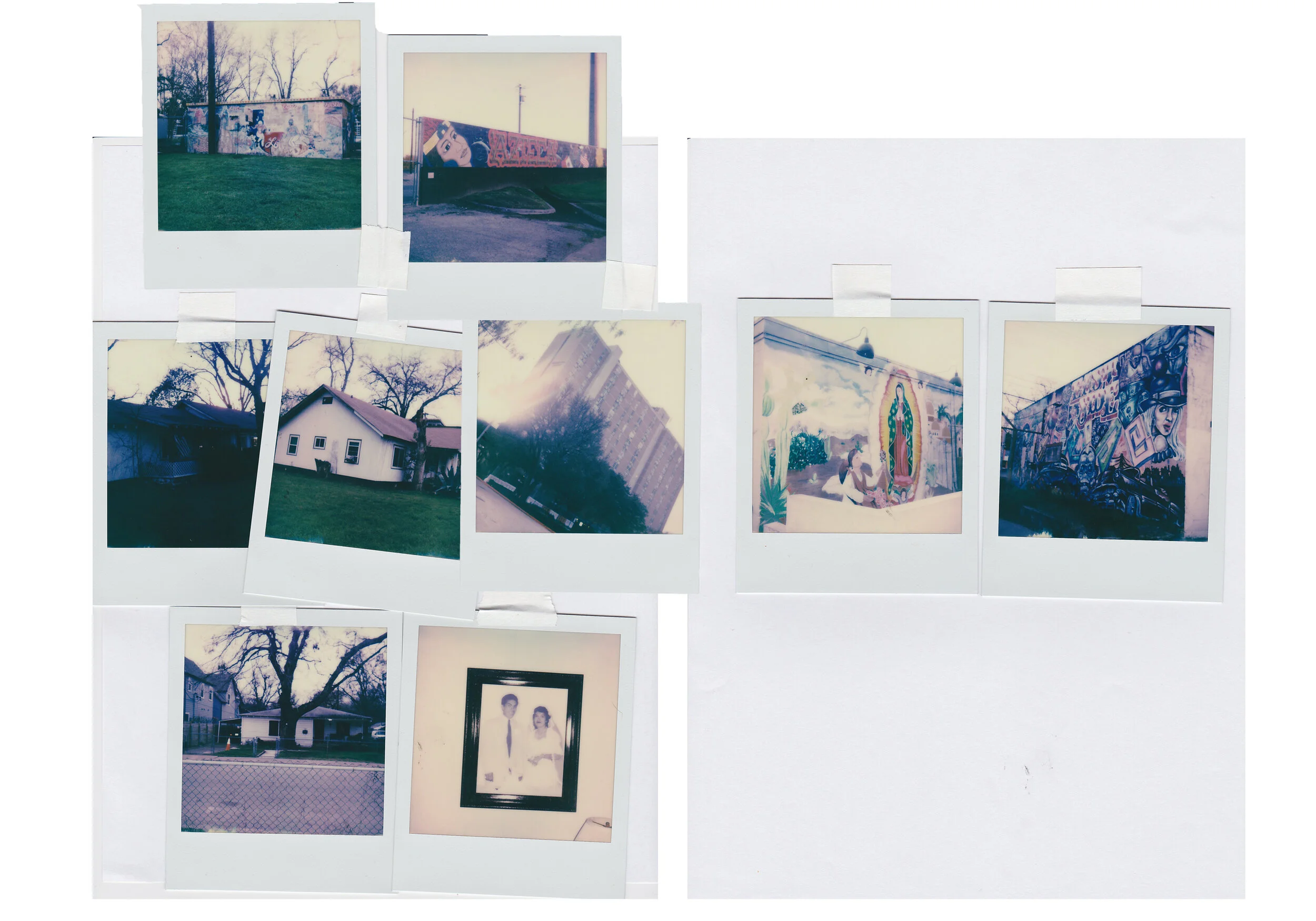Visually Re-membering the Eastside: Trajectories of Belonging and Displacement in Austin
Historically the home to predominantly Black and Latinx communities, the Eastside of Austin, Texas is being confronted with the distinct pressures of the city’s rapid growth. Residents of the Eastside are experiencing significant losses of physical spaces in the communities of the Eastside. Along with the closures of schools and local businesses, many lifelong community members are being pressured to sell their homes to developers as property values increase. This research, conducted by Anneke Paterson for an undergraduate honors thesis at Texas State University, explores the effects of these pressures and losses in the day-to-day lives of residents who are most vulnerable through visual and anthropologically-informed methods. Through the visual approaches of photovoice and social mapping, this research challenges traditional photographic practice by facilitating community members in the creation of their own visual representations of the Eastside. This research also explores the value of these visual methods to cultural anthropology, as they may serve to complement more established ethnographic research methods, such as informal interviews. This research examines the complex, ambivalent experiences of long- term residents living a gentrifying space, where senses of belonging, home, and place are being actively challenged or subverted by the incoming demographic. These senses are also able to remain fixed both within and because of community practice. Through the visual research methods used in this project, considerations of agency and representation are reviewed for future visual inquiry of urban space and place, belonging, displacement, and other relating issues in social research.
“You know… it had soul. East Austin had soul. It had a feeling of struggle. It was scary for other people to go to that neighborhood but for us, it was beautiful. Everyone felt that way. I’ve never met a person from East Austin who’s ever said they disliked East Austin. There’s a reason why they stayed.”
“It didn’t matter when our side of town was shitty before, when we lived here. Now people with money moved here and suddenly things need to be nice -- to be nice for them. Suddenly they want to put effort into fixing things, into making it look nice. When it was us, they didn’t care.”
“It’s just the culture, the language that we use, the way we talk to each other -- we know if you’re from East Austin.”
“It’s like I’m going to be grieving from having to move from here. I'm going to be grieving from seeing my childhood home torn down… it’s going to be hard. It’s going to be really hard.”
“If you went to certain places and that’s where you -- that’s all that mattered. On Saturday, you went to Roosevelt Park. That’s the oldest park in the neighborhood, so, if you have memories going to [the same] park, that’s pretty much -- I don’t care who you are -- if you went to [the same park], you went to [the same park]. Everybody knows that.”
“I am constantly back and forth about wanting to keep it forever, and cherish it, or just completely relinquish it, and give it away to some maniac to just tear it down. I always get stuff in mail, and stuff on my doorstep of very large amounts of cash sums for my house.”
“I wrote ‘this is mine forever’ around the photos of my home because I just have a strong desire to try to hold onto this as long as possible, because I love it so much. I know it would be destroyed if I ever let it go.”
This work is protected by the Copyright Laws of the United States (Public Law 94-553, section 107). Consistent with fair use as defined in the Copyright Laws, brief quotations from this material are allowed with proper acknowledgement. Use of this material for financial gain without the author’s express written permission is not allowed.




